Targeted workouts are crucial for efficient muscle development, allowing individuals to focus on enhancing specific muscle groups to achieve balanced growth and improved physical aesthetics. Such specialization not only optimizes the training effect on the desired areas but also helps in increasing strength and endurance in a more controlled and measurable manner. Understanding which exercises impact specific muscle groups is immensely beneficial as it enables the creation of a tailored workout regimen. This knowledge helps in effectively targeting weaknesses or imbalances, and in designing a program that can adapt to one’s unique physical needs and fitness goals. Overall, strategic, targeted workouts ensure that each session is maximally effective, promoting better overall muscle health and function.
Breaking Down the Best Workouts for Each Muscle Group
Chest Workouts
The chest muscles, primarily the pectoralis major and pectoralis minor, play a crucial role in upper body strength and aesthetics. The pectoralis major helps in the flexion, adduction, and rotation of the humerus, while the pectoralis minor assists in scapular movements such as depression and protraction.
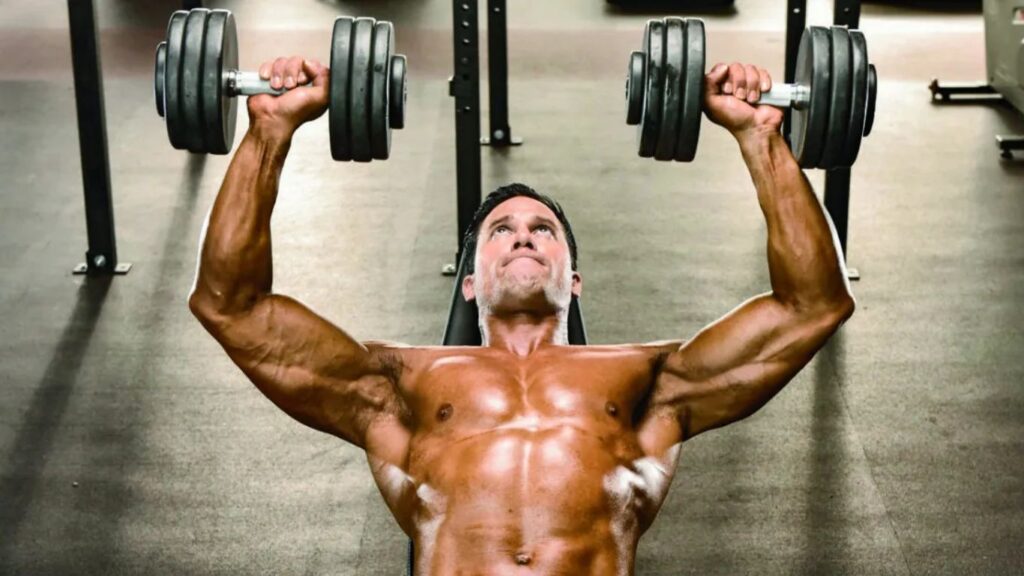
Key exercises to target these muscles include the bench press, push-ups, and chest flys:
- Bench Press: Lie back on a flat bench, gripping the barbell with hands just wider than shoulder-width. Lower the bar to mid-chest, then press up, focusing on contracting the chest muscles. Beginners can start with lighter weights or even a barbell without weights.
- Push-Ups: Start in a plank position with hands slightly wider than shoulders. Lower your body until your chest nearly touches the ground, then push up. Variations like knee push-ups or incline push-ups can help beginners.
- Chest Flys: Using dumbbells, lie on a flat bench or use an incline. With a slight bend in your elbows, open your arms wide then bring the weights together above your chest, squeezing the chest muscles.
Back Workouts
Description of Major Back Muscles and Their Roles:
- Latissimus Dorsi (Lats): Large muscles that run down the sides of the back, important for arm movement and stability.
- Trapezius (Traps): Located from the neck to the middle of the back, crucial for moving, rotating, and stabilizing the scapula.
- Rhomboids: Connects the spine to the scapula, essential for retracting the shoulder blades.
- Erector Spinae: A group of muscles along the spine, responsible for extending and rotating the back.
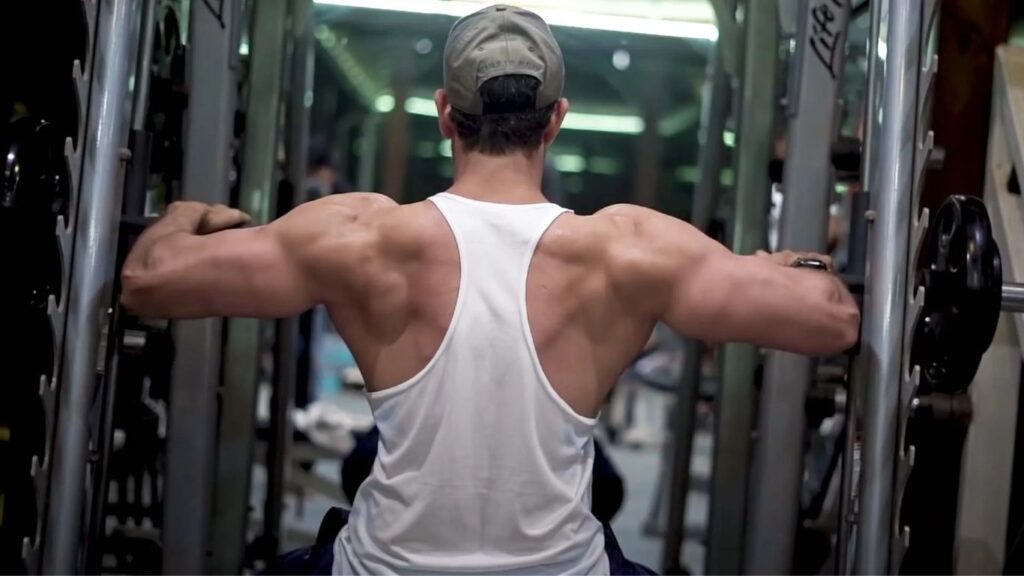
Key Exercises:
- Pull-Ups: Strengthen the lats and biceps, enhancing shoulder stability and upper body strength.
- Rows (Barbell/Dumbbell/Bodyweight): Target the middle back, improving posture and back thickness.
- Deadlifts: Engage the entire back, particularly the lower back, also involving legs and core for overall strength.
Avoiding Common Injuries and Importance of Posture:
- Warm-Up Properly: Always start with a light warm-up to prepare the muscles and increase blood flow.
- Mind Your Form: Focus on maintaining a neutral spine throughout exercises to prevent strain.
- Gradual Progression: Increase weight and intensity gradually to avoid overloading the muscles.
- Posture Awareness: Regularly practice and maintain good posture to strengthen back muscles and reduce injury risk, even outside the gym.
Leg Workouts
Muscle Groups in the Legs:
- Quadriceps (Quads): Located at the front of the thigh, responsible for knee extension and hip flexion. Key muscles include the rectus femoris, vastus lateralis, vastus medialis, and vastus intermedius.
- Hamstrings: Situated at the back of the thigh, these muscles aid in knee flexion and hip extension. Composed of the biceps femoris, semitendinosus, and semimembranosus.
- Calves: Comprising the gastrocnemius and soleus muscles, these are pivotal for ankle flexion, playing a crucial role in walking, running, and jumping.
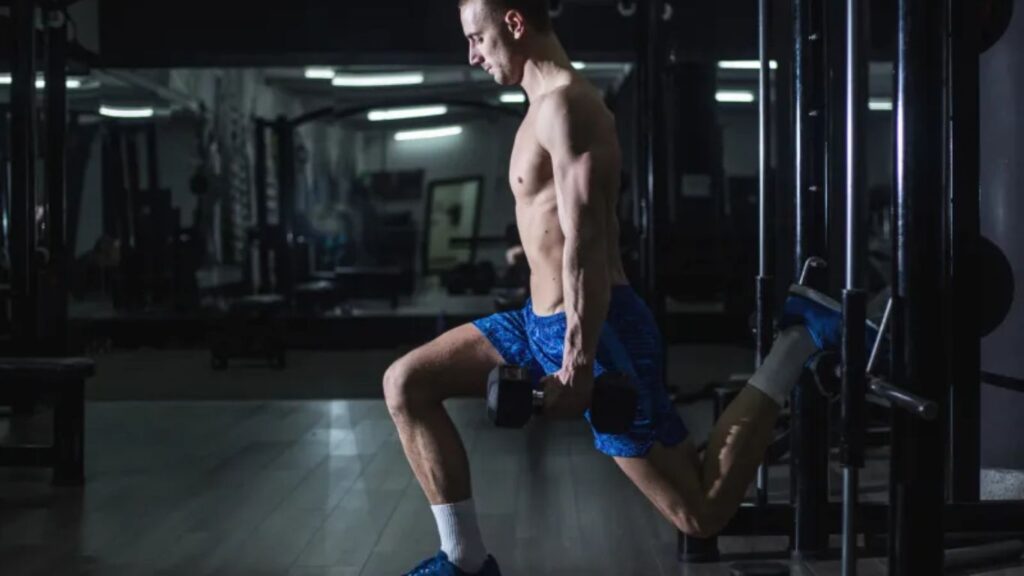
Essential Workouts:
- Squats: Target primarily the quads, hamstrings, and glutes; vital for building lower body strength.
- Lunges: Engage the quads, hamstrings, and calves; beneficial for enhancing balance and coordination.
- Calf Raises: Focus on strengthening the gastrocnemius and soleus muscles, essential for lower leg power.
Advice on Balancing Leg Training:
- Train symmetrically: Ensure equal training intensity and volume on both legs to prevent imbalances and injuries.
- Incorporate variety: Utilize different exercises and angles to evenly develop all leg muscles and avoid overuse of any single group.
- Consistent progression: Gradually increase the intensity and complexity of workouts to continually challenge the leg muscles, promoting balanced growth and strength.
Arm Workout
Biceps:
- Muscles Involved: Primarily the biceps brachii, which is crucial for forearm rotation and flexion.
- Best Exercises:
- Bicep Curls: Use dumbbells or a barbell to perform standard curls, hammer curls for variation.
- Concentration Curls: Sit on a bench with one arm against your thigh and curl.
- Variations:
- Strength Focus: Increase weight and decrease reps.
- Toning Focus: Perform higher repetitions with lighter weights.
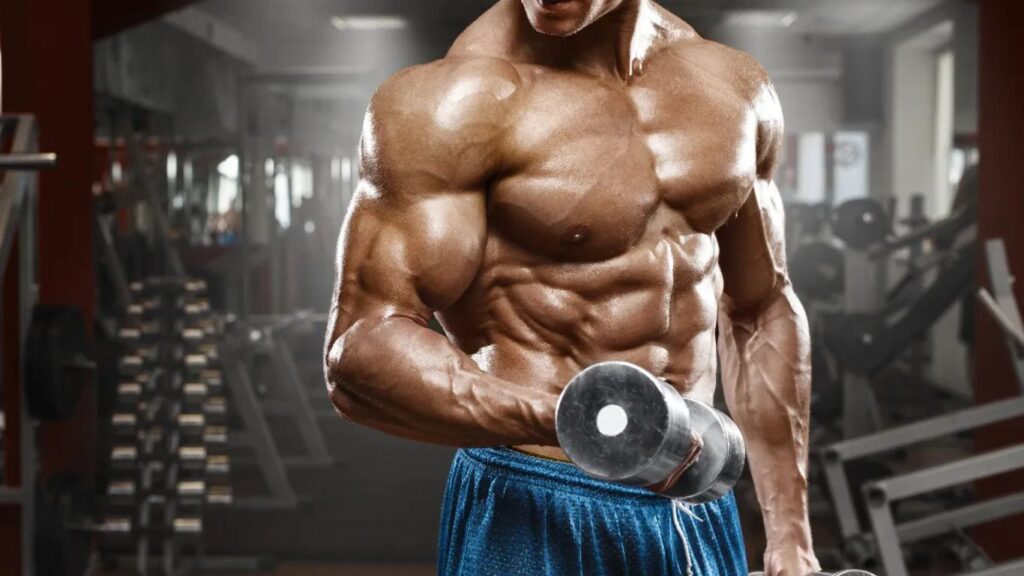
Triceps:
- Muscles Involved: Comprises the long, medial, and lateral heads, essential for elbow extension.
- Best Exercises:
- Tricep Dips: Use parallel bars or a bench for bodyweight dips.
- Overhead Tricep Extensions: Perform with a dumbbell or cable.
- Variations:
- Strength Focus: Add weight using a dip belt or heavy dumbbells.
- Toning Focus: Emphasize higher reps and include drop sets.
Forearms:
- Muscles Involved: Various smaller muscles that control movements of the hand and wrist.
- Best Exercises:
- Forearm Grips: Use a hand gripper or squeeze a tennis ball.
- Wrist Curls: Perform with a barbell or dumbbells, seated or standing.
- Variations:
- Strength Focus: Use heavier weights and slower movements.
- Toning Focus: Perform more repetitions with lighter weights and include static holds.
Shoulder Workouts
Anatomy of the Shoulder Muscles:
- The shoulder complex includes several muscles, with the deltoids, rotator cuff, and trapezius being primary.
- Deltoids are divided into three segments: anterior, medial, and posterior, each contributing to different arm movements.
- The rotator cuff consists of four muscles that stabilize the shoulder and allow rotational movements.
Effective Exercises:
- Shoulder Press: Targets mainly the anterior and medial deltoids. Can be performed with dumbbells or a barbell.
- Lateral Raises: Focus on the medial deltoid. Performed by lifting weights outward to the sides, up to shoulder level.
- Reverse Flys: Emphasize the posterior deltoid and the upper back. Done by extending the arms out to the sides while bent over.
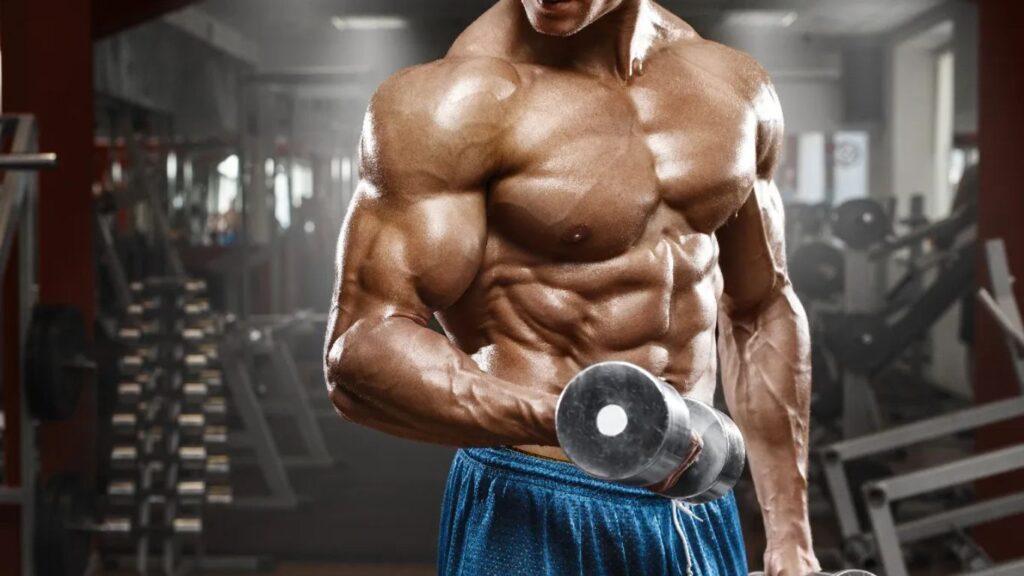
Importance of Shoulder Health:
- Strong shoulders are crucial for both everyday activities and athletic performance.
- Proper strengthening helps prevent common injuries like rotator cuff tears and shoulder impingement.
- Overuse injuries can be minimized by ensuring proper form, using appropriate weights, and incorporating rest and recovery into your training schedule.
Conclusion
Understanding and implementing targeted workouts for each muscle group can significantly enhance your strength and overall body composition. By focusing on specific exercises for the chest, back, legs, arms, and shoulders, you can ensure that each muscle receives the attention it needs to grow and strengthen. Remember, consistency and proper technique are key to achieving the best results. Whether you’re a beginner or a seasoned athlete, integrating these exercises into your routine will help you build a balanced, strong physique. Always consider consulting with a fitness professional to tailor these workouts to your individual needs and goals.
Also read: The Power of Focus: How Mind-Muscle Connection Transforms Your Workouts
